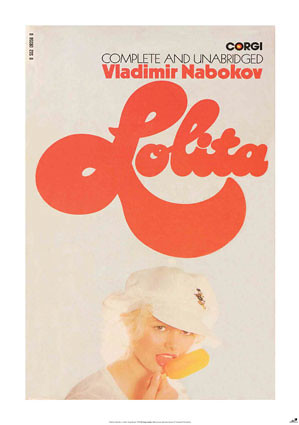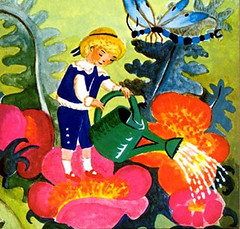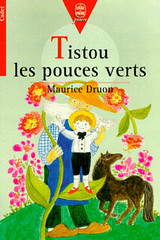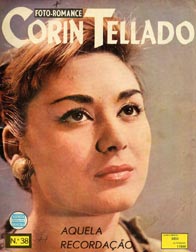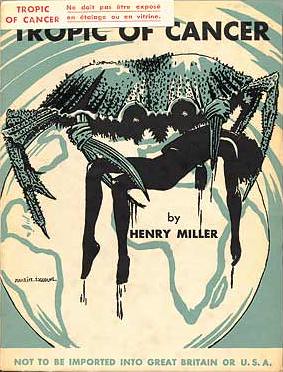If you live in Antwerp and are into Dutch lit, there is lovingly put together expo on Remco Campert (born 1929) at Antiquariaat Demian. The photo is a detail of the shop window this afternoon.
Category Archives: literature
Niccolò Machiavelli @540
Niccolò Machiavelli @540
Niccolò Machiavelli (Detail of 1500 portrait of Machiavelli by Santi di Tito)
Niccolò Machiavelli (May 3, 1469 – June 21, 1527) was Italian historian, statesman and political author. His best-known work is The Prince, the posthumously published treatise responsible for bringing the authorial descriptive “Machiavellian” into wide usage as a pejorative term to denote power-hungry, megalomanic, unethical or despotic practices or methods.
Machiavellian
Robinson Crusoe @290
Robinson Crusoe by Daniel Defoe was published on April 25, 1719.
Robinson Crusoe (1719) – Daniel Defoe
Image sourced here.
Robinson Crusoe is an English adventure novel by Daniel Defoe, first published in 1719 and sometimes regarded as the first novel in English. The book is a fictional autobiography of the title character, an English castaway who spends 28 years on a desert island. This device, presenting an account of supposedly factual events, is known as a “false document“, and gives a realistic frame story.
The term “Robinsonade” has been coined to describe the genre of stories similar to Robinson Crusoe.
If we surmise that Robinson Crusoe was the first piece of boy’s lit, the Anglophone world had to wait 21 more years for its first piece of chick lit which was arguably Pamela.
Nabokov @110
Nabokov @110
Corgi edition of Nabokov‘s Lolita
(notice “complete and unabridged,” meaning previously censored)
Delving more and more into the art of commemoration I find it strange that people also commemorate people’s deaths. To me the birthday is what counts. I always want to go to the source, not to the end. Just like in horoscopes, where I find it strange that it takes as basis the date of birth, rather than the date of conception.
I offer you the Corgi edition of Nabokov‘s Lolita, the novel he will always be best remembered for.
RIP J. G. Ballard (1930 – 2009)
RIP J. G. Ballard (1930 – 2009)
The Atrocity Exhibition (1970) – J. G. Ballard [Amazon.com] [FR] [DE] [UK]
Cover for the first edition of The Atrocity Exhibition.
James Graham Ballard (born November 15, 1930 in Shanghai – 19 April 2009) was a British writer. He was a prominent member of the New Wave in science fiction. His best known books are the controversial Crash, and The Atrocity Exhibition, Crash was made into film by David Cronenberg.
The adjective “Ballardian“, defined as “resembling or suggestive of the conditions described in JG Ballard’s novels and stories, especially dystopian modernity, bleak man-made landscapes and the psychological effects of technological, social or environmental developments,” has been included in the Collins English Dictionary.
His work was most recently celebrated in the exhibition J. G. Ballard. Autopsy of the new millennium.
David Pelham covers
RIP Maurice Druon (1918 – 2009)
RIP Maurice Druon (1918 – 2009)
Tistou les pouces verts is a story by Maurice Druon illustrated by Jacqueline Duhême. The story was animated by Production I.G.[1]
[Youtube=http://www.youtube.com/watch?v=SAGL-bdIFfU]
Maurice Druon (b.April 23 1918 – d.April 14 2009) was a French novelist and member of Académie française.
Surnamed “L’imagière des poètes,” Jacqueline Duhême is a French author and illustrator born in Versailles in 1927.
RIP Corín Tellado (1927 – 2009)
RIP Corín Tellado
María del Socorro Tellado López, known as Corín Tellado (April 25 1927, Viavélez, Asturias, Spain – April 11 2009, Gijón, Spain) was a prolific Spanish writer of romantic novels and photonovels that were best-sellers in several Spanish-language countries. She published more than 4,000 novels and sold more than 400-million books which have been translated into several languages. She is listed in the 1994 Guinness World Records as having sold the most books written in Spanish.
digressions:
the romance novel
A romance novel is a literary genre developed in Western culture. Novels in this genre place their primary focus on the relationship and romantic love between two people, and generally has a happy ending.
One of the earliest romance novels was Samuel Richardson’s popular 1740 novel Pamela, or Virtue Rewarded, which was revolutionary on two counts: it focused almost entirely on courtship and did so entirely from the perspective of a female protagonist. In the next century, Jane Austen expanded the genre, and her Pride and Prejudice is often considered the epitome of the genre.
Pride and Prejudice
Pride and Prejudice, first in 1813, is the most famous romance novel. Its opening is one of the most famous lines in English literature—”It is a truth universally acknowledged, that a single man in possession of a good fortune, must be in want of a wife.”
On genre vs. literary
No matter how “literary“, all novels also fall within the bounds of one or more genres. Thus Jane Austen‘s Pride and Prejudice is a romance; Fyodor Dostoevsky‘s Crime and Punishment is a psychological thriller; and James Joyce‘s A Portrait of the Artist as a Young Man is a coming-of-age story. These novels would usually be stocked in the general or possibly the classics section of a bookstore. Indeed, many works now regarded as literary classics were originally written as genre novels. —Sholem Stein
A Young Girl Reading (c.1776) by Fragonard
Literacy: with some exceptions, only a small percentage of the population in many countries was considered literate before the Industrial Revolution. Reading as a means of consuming fiction was at the height of its popularity in the 19th century.
Did women and men have different reading habits? Is there any truth in the claim that women have always read more fiction, women have often been pioneering professional writers and have produced a score of successful authors (Doff, Liala, Delly), yet have been patriarchally excluded from literary histories.
I have many questions regarding the nature of the literary experience. Perhaps I shoul read The Space of Literature?
The Space of Literature, first published in France in 1955, and translated into English in 1982 is central to the development of Blanchot‘s thought. In it he reflects on literature and the unique demand it makes upon our attention. Thus he explores the process of reading as well as the nature of artistic creativity, all the while considering the relation of the literary work to time, to history, and to death. This book consists not so much in the application of a critical method or the demonstration of a theory of literature as in a patiently deliberate meditation upon the literary experience, informed most notably by studies of Mallarmé, Kafka, Rilke, and Hölderlin.
Maurice Girodias @90
Maurice Girodias @90
In 1934, at the age of 15, Girodias drew the disturbing crab picture seen on the original cover of Tropic of Cancer.
The cover states: “Ne doit pas etre exposé en étalage ou en vitrine,” in English that is: “Cannot be displayed in show window.”
Ah … the good old “sous le manteau” days
“I remember a very funny story told to me by Maurice. He once had to take the train to Belgium, where he needed to bring a great deal of money. He had hidden the money bills in his shorts. Once on the train, he was overcome by diarrhea and forgot to remove the money from his shorts when he went to the toilet with the unfortunate result of soiling this small fortune. He cleaned the money as best as he could and afterwards reserved those bills to use as — quite literally — dirty money.” —Sholem Stein
Maurice Girodias (12 April 1919 – 3 July 1990), was the founder of the The Olympia Press. At one time he was the owner of his father’s Obelisk Press, and spent most of his productive years in Paris.
Girodias’s involvement with his father’s business started early. In 1934, at the age of 15, Girodias drew the disturbing crab picture seen on the original cover of Tropic of Cancer. After his father’s early death in 1939, Girodias took over publishing duties, and at the age of 20 managed to survive Paris, World War II, Occupation and paper shortages.
The Affaire Miller ended with Girodias out of jail, but bankrupt and no longer in control of his company.
Olympia Press
Olympia Press was a Paris-based publisher, launched in 1953 by Maurice Girodias as a rebadged version of the Obelisk Press he inherited from his father Jack Kahane. It published a mix of erotic novels and avant-garde literary works, and is best known for the first print of Vladimir Nabokov‘s Lolita.
Most, if not all, Olympia Press publications were promoted and packaged as “Traveller’s Companion” books, usually with simple text-only covers, and each book in the series was numbered.
Olympia Press was also the first publisher willing to print the controversial William S. Burroughs novel, Naked Lunch. Other notable works included J. P. Donleavy‘s The Ginger Man; the French trilogy Molloy, Malone Dies and The Unnamable by Samuel Beckett; A Tale of Satisfied Desire by Georges Bataille and Story of O by Pauline Réage.
English-language presses in Paris
The Enlish-language literary expatriates depended on the presence in Paris of a substantial number of English-language presses, periodicals, and bookstores. These small presses included such famous names as the Contact Press (of American poet Robert McAlmon), the Three Mountains Press (of Bill Bird), the Hours Press (of Nancy Cunard), the Black Sun Press (of Harry and Caresse Crosby), the Obelisk Press (of Jack Kahane), and the Olympia Press (of Maurice Girodias, son of Kahane).
Milan Kundera @80
Milan Kundera @80
Iconic mirror scene from The Unbearable Lightness of Being
Milan Kundera (born April 1, 1929, in Brno, Czechoslovakia) is a Czech and French writer of Czech origin who has lived in exile in France since 1975, where he became a naturalized citizen in 1981. He is best known as the author of The Unbearable Lightness of Being, The Book of Laughter and Forgetting, and The Joke.
Kundera has written in both Czech and French. He revises the French translations of all his books; these therefore are not considered translations but original works. Due to censorship by the Communist government of Czechoslovakia, his books were banned from his native country, and that remained the case until the downfall of this government in the Velvet Revolution in 1989.
RIP Ronald Tavel (1936 – 2009)
RIP Ronald Tavel
Poster by Alan Aldridge for Chelsea Girls (1966), for which Tavel wrote the script.
Ronald Tavel (May 17, 1936 – March 23, 2009) was an American writer, director and actor, and was known for his work with Andy Warhol and The Factory. He was involved in the Playhouse of the Ridiculous and wrote the scripts for Chelsea Girls, Poor Little Rich Girl and Vinyl.



